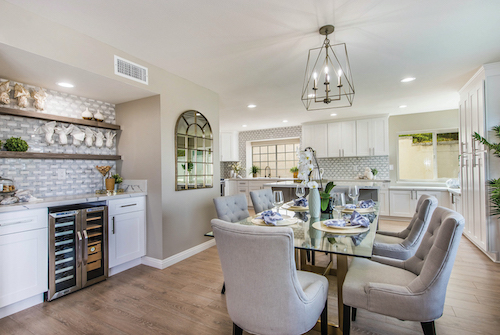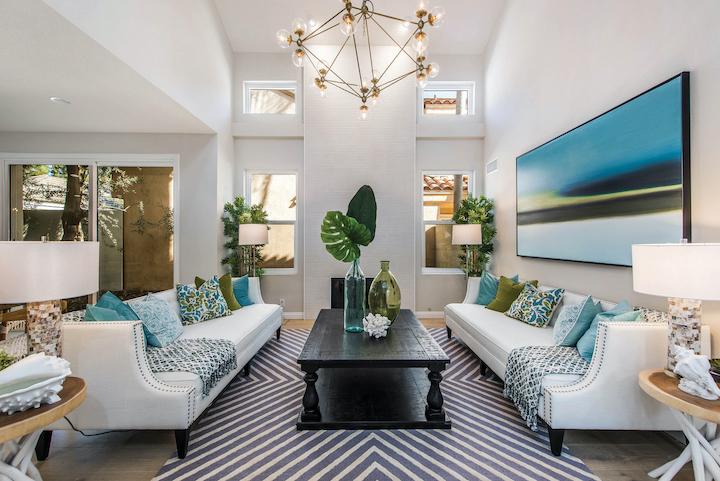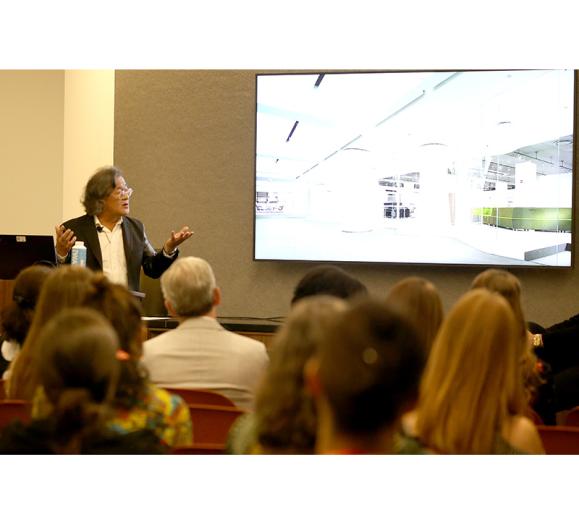At January’s Las Vegas Market, Kevin Htain, Owner of Identity Home staging+design and International Association of Home Staging Professionals (IAHSP) board member, discussed why and how interior designers should consider adding home staging to their businesses. The presentation was authored by Jennie Norris, Chairwoman of IAHSP.
Kevin Htain and Jennie Norris
Why Add Staging to Your Interior Design Business?
Home staging is an additional revenue stream for interior designers and helps diversify your income. Interior design is a luxury item for most clients, while home staging is a necessity for sellers, Htain said. No matter the state of the economy, there will still be people trying to sell their homes; if the market is up, staged houses sell for more money, and if the market dips, staged houses sell faster.
A home staging project can be completed much more quickly than an interior design project, as there is minimal back-and-forth with the client and no waiting for custom furnishings or special purchases. While interior design projects can take several months to complete, a home staging project can be finished in just a few weeks, with the installation taking a matter of hours.
Because home stagers are designing with the end goal of selling the home, not pleasing the client, there is less worry about clients changing their minds or not liking the outcome of a project. There should be no agonizing over design choices, no excess spending and no catering to the homeowner’s taste. A successful interior design project ends with a satisfied client who feels connected to their home. A successful staging project ends with a sale.
What’s the Difference?

Interior designers are hired to inject the homeowner’s personal style into a space. They add color, decor and personality so that the homeowner forms an attachment to the space. Interior design is all about the client and their happiness and comfort.
Staging, on the other hand, requires a design style that appeals to a broad range of potential buyers. Although the seller is technically a stager’s client, the design is not for them. Once a seller makes the commitment to sell their home, it is no longer theirs, Htain said. It’s best if the seller is able to emotionally detach from the home.
Home Staging Tips
- Adding staging to your interior design business doesn’t have to be expensive, especially if you start slowly. Building an inventory can be done gradually, and stagers should accumulate neutral, versatile pieces that will work in multiple settings. With the help of furniture rental companies, designers can even avoid storing furniture and limit their inventory to “anything that fits in a Toyota Corolla,” Htain said.
- Staged homes should focus on the space and features of the house, which means stagers should “de-personalize, de-clutter, de-everything,” Htain said. Anything with eyes should be removed, according to Htain. Eyes are begging to be looked at, and if a buyer is looking at a person in a photo, they aren’t looking at the rest of the home. Bookshelves should not be completely full so the potential buyer can envision their things in the spaces. Windows should remain uncovered, and furniture and lighting should be scaled properly.
- At the end of a project, always hire a professional photographer to capture the home from the best angles. Having quality photos to add to a listing can make or break a staging project.









